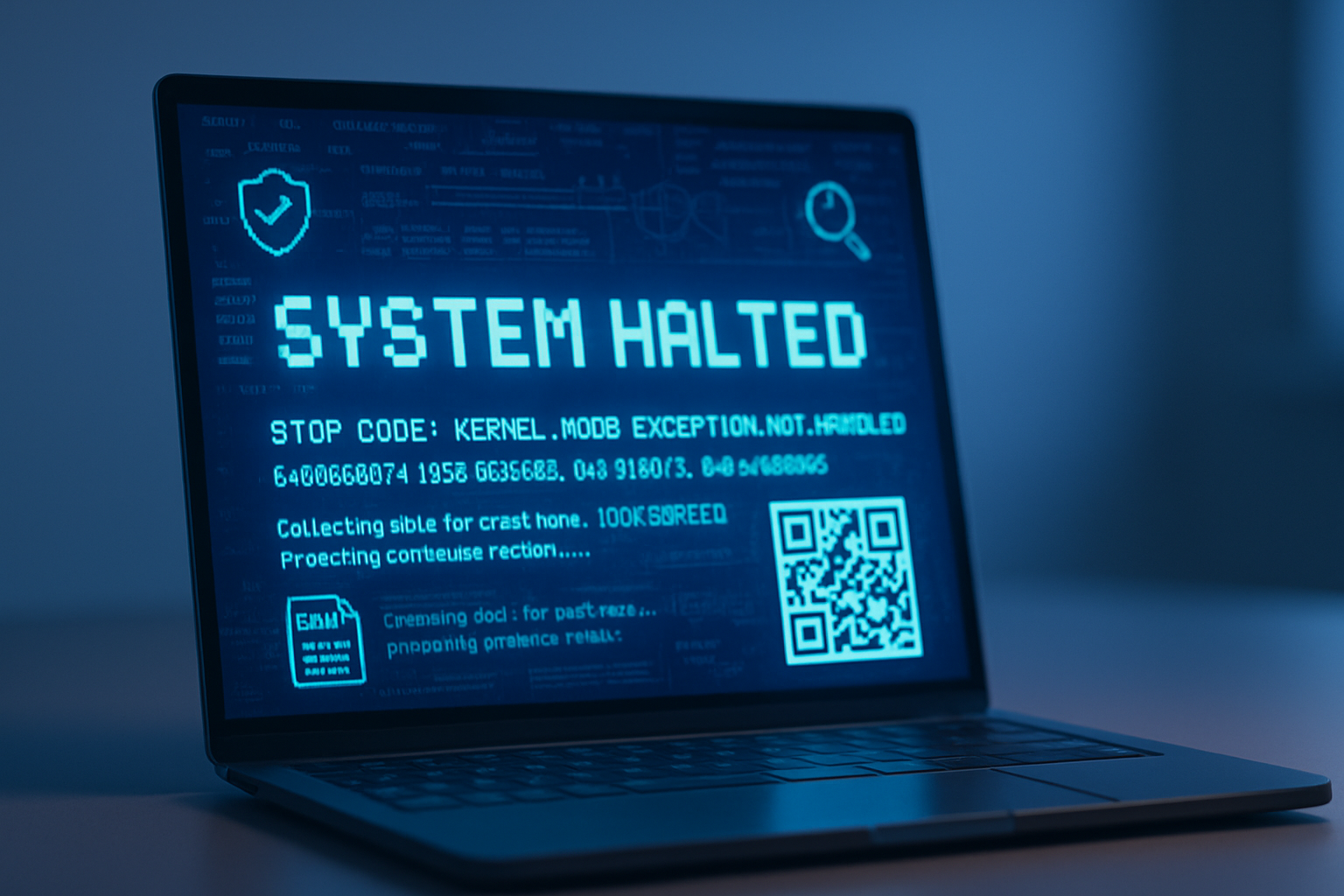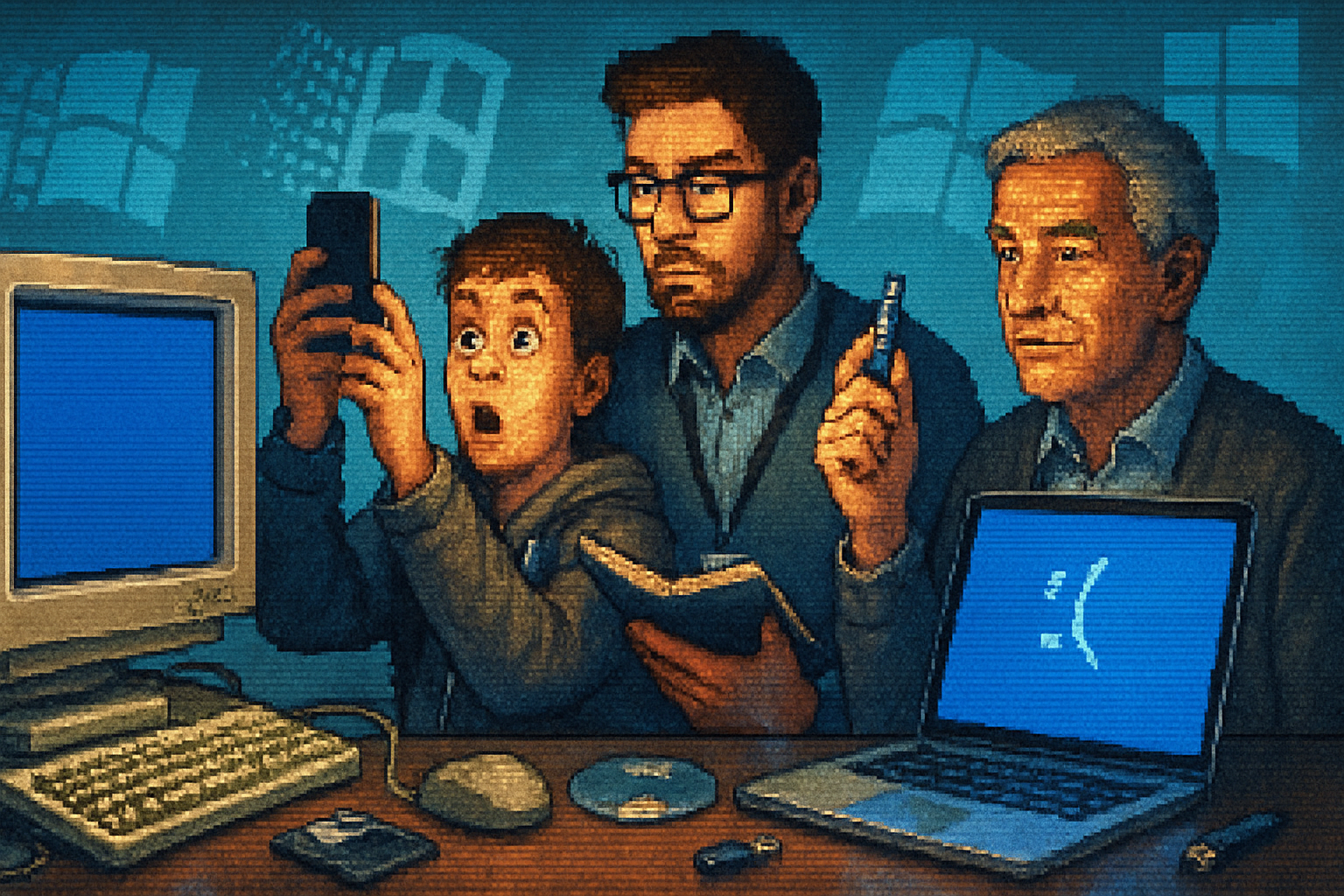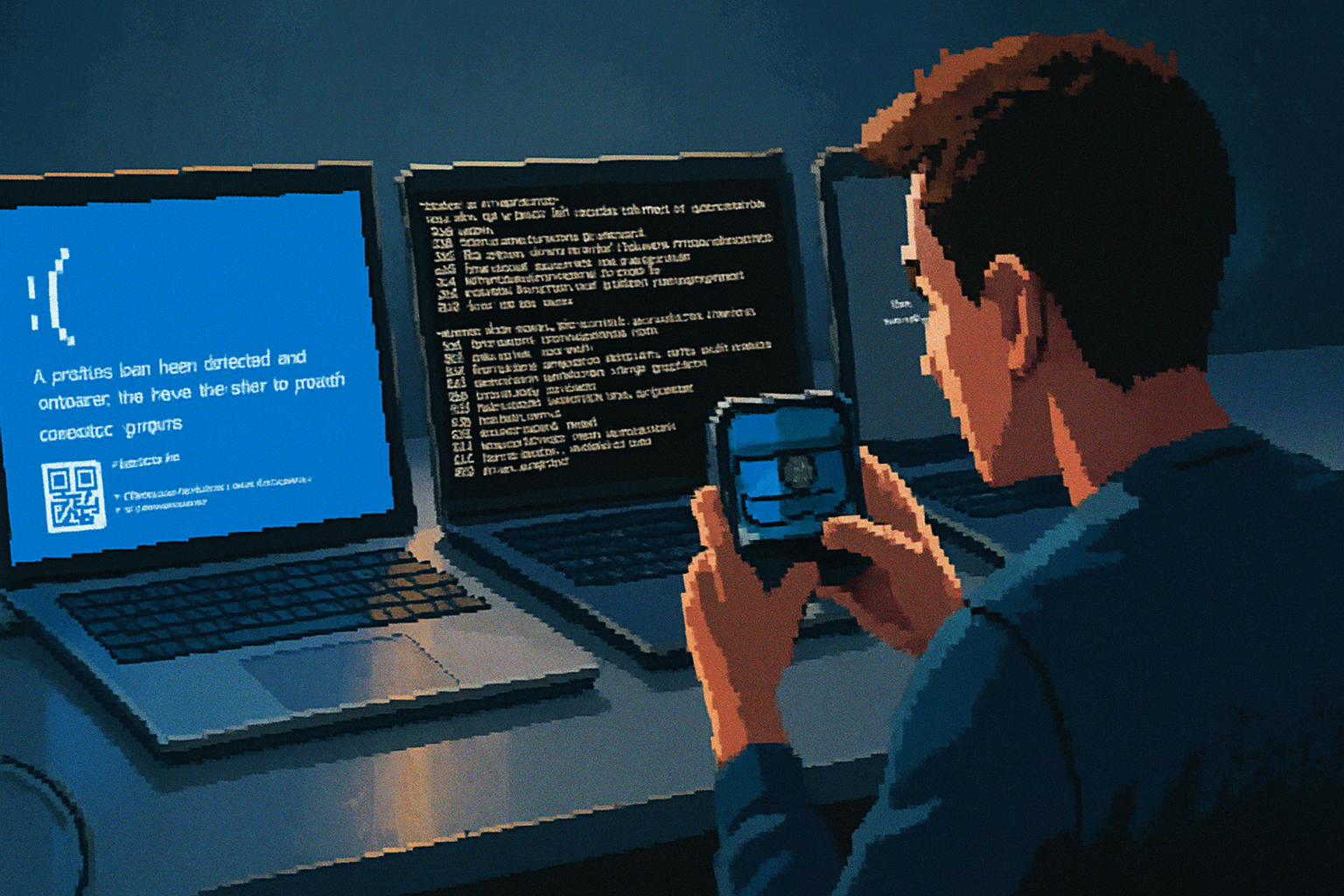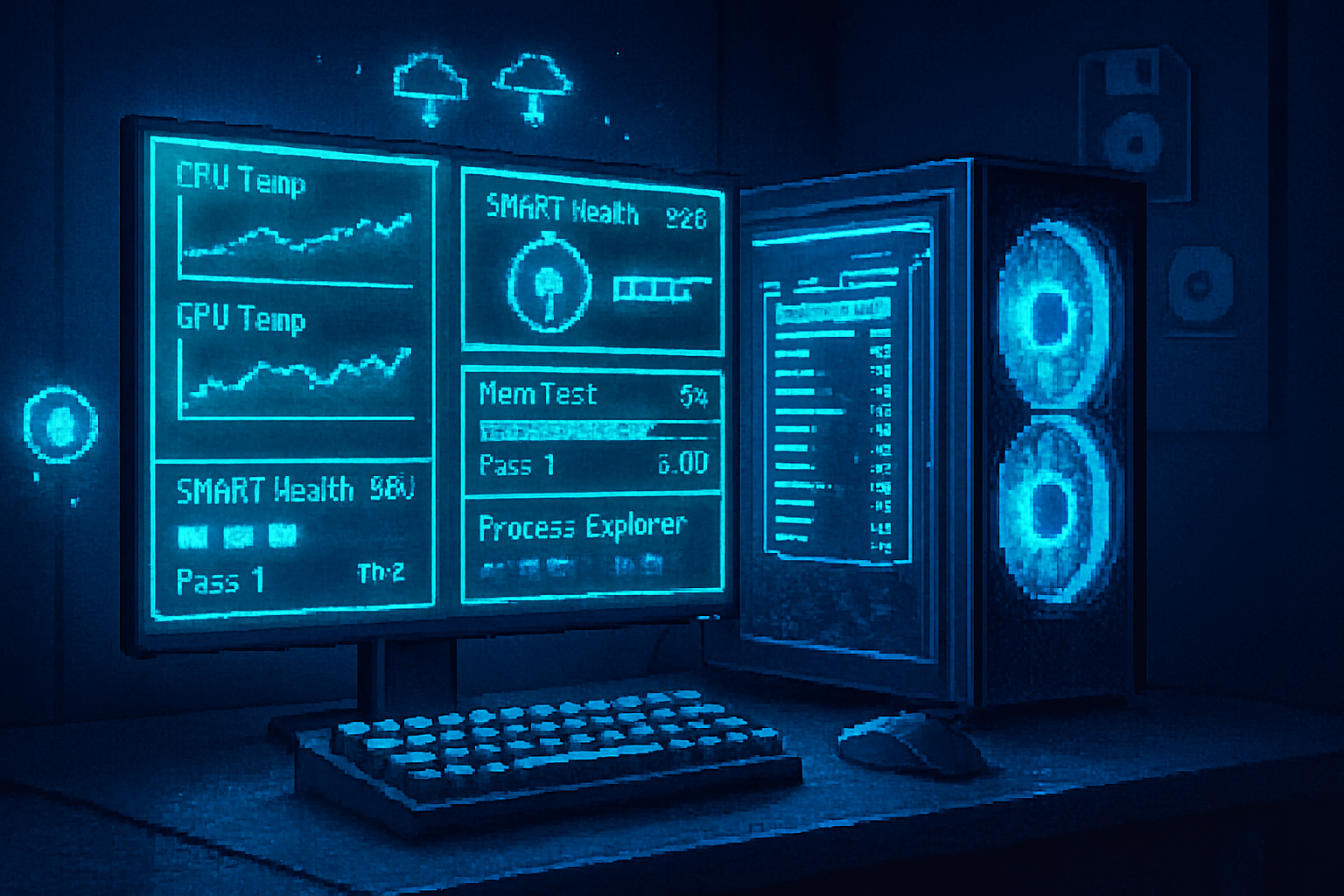· 7 min read
Fixing the Blue Screen of Death: Historical Perspectives on Solutions
A historical tour of how troubleshooting the Blue Screen of Death evolved - from crude hardware checks and last-known-good settings to sophisticated dump analysis, telemetry-driven fixes, and user education strategies that turned panic into process.
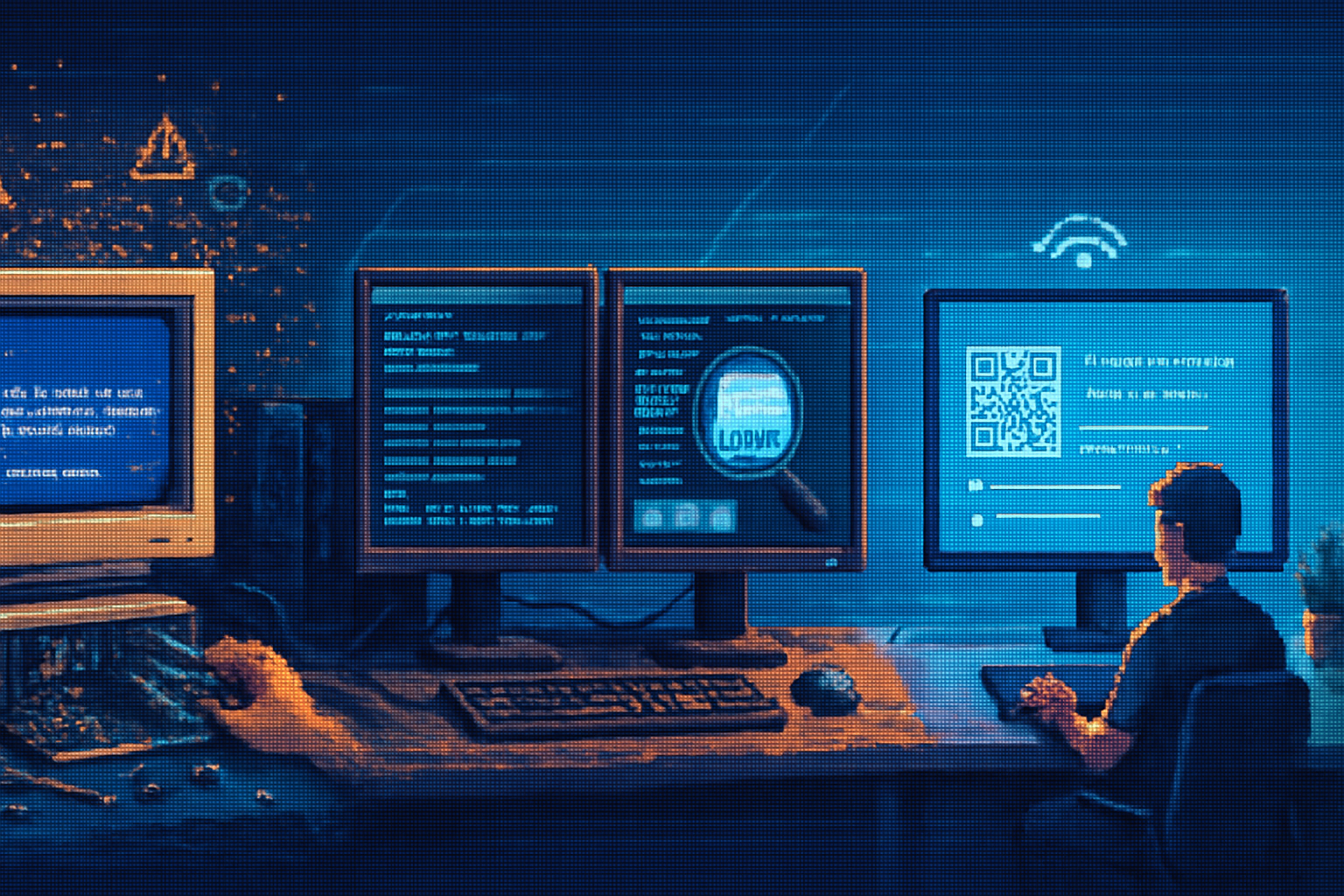
Introduction
The Blue Screen of Death (BSOD) has been one of personal computing’s most infamous moments: an abrupt halt, a wall of error text, and the immediate question - how do I fix this? Over decades the methods and tools for diagnosing and repairing BSODs have evolved dramatically. This article traces that evolution: the practical steps early technicians used, the growth of software-based diagnostics and kernel debugging, and the parallel rise of user-facing education and automated telemetry that turns isolated crashes into actionable fixes.
Early days: hardware-first troubleshooting
In the earliest days of PCs, crashes were often treated as hardware events. Common, immediate actions included:
- Power-cycling and reseating components (RAM, expansion cards).
- Verifying BIOS/firmware settings and updating ROMs.
- Swapping suspected components to isolate a failing module.
These steps made sense because early PC instability frequently stemmed from marginal RAM, flaky power, or incompatible add-in cards. There was little in the way of persistent diagnostics - you relied on trial, replacement, and observation.
Birth of the BSOD and software-centric debugging
As operating systems grew more complex (notably with Windows NT and the broader adoption of protected-mode OSes), crashes began to carry more structured state information. The term “Blue Screen of Death” came to describe those stop-error screens that were primarily the OS telling you it had encountered an unrecoverable kernel or driver fault. Over time Microsoft formalized the information shown in these stops (historic overview: Wikipedia-Blue Screen of Death).
This shift made software-centric debugging possible. Key technical milestones included:
- Memory dump creation (small/mini, kernel, complete) so crashes could be analysed offline.
- The advent of kernel debuggers like WinDbg and KD, which allowed developers and administrators to inspect kernel stacks and memory after a crash (Windows Debugging Documentation).
- The formalization of bugcheck (stop) codes and symbolic debugging information to make analysis more deterministic (Bug Check Code Reference).
Tools and techniques that changed the game
A set of tools and approaches gradually became standard for BSOD troubleshooting:
Memory and hardware testers - Tools like MemTest86 helped confirm whether RAM faults were responsible for crashes (
Disk and file-system repair - CHKDSK and later filesystem repair utilities could fix filesystem corruption that sometimes produced hard-to-diagnose crashes (
System file verification and image repair - SFC (System File Checker) and DISM provided means to repair corrupt system files that could cause kernel instability (
Driver-focused tools - Driver Verifier allowed testing drivers under stress to reveal race conditions or memory corruption that only appear under heavy or pathological conditions (
Kernel debuggers and dump analyzers - WinDbg, its modern Preview incarnation, and KD became the professional-grade path for deep diagnosis. For users and many IT pros, easier utilities such as NirSoft’s BlueScreenView or Resplendence’s WhoCrashed provided digestible interpretations of crash dumps (
Sysinternals utilities - The Microsoft Sysinternals suite (Process Explorer, Autoruns, RAMMap, etc.) helped admins find misbehaving processes, driver loads, and startup issues that could lead to instability (
From reactive to proactive: telemetry and automated reporting
A major transformation in the BSOD landscape came with automated error reporting and telemetry. Instead of each crash being an isolated event, tools could collect dumps and metadata and surface trends back to vendors and developers.
Windows Error Reporting (WER) centralized crash collection and allowed Microsoft (and OEMs) to detect widespread driver or update problems quickly. This made it possible to distribute targeted fixes rather than relying on each user to report issues individually (Windows Error Reporting).
Telemetry and cloud analytics allowed correlation across millions of devices; vendors could prioritize high-impact bugs, identify offending drivers, and push updates via Windows Update - dramatically compressing the time between first reports and global fixes.
User experience and messaging improvements
Early stop screens were dense with technical data but offered little guidance to typical users. Over the years the UX evolved to be more informative and less intimidating:
Cleaner messages, friendly icons, and (in modern releases) QR codes and brief error summaries that point users to targeted support articles and automated recovery workflows.
Recovery tools such as the Windows Recovery Environment (WinRE) provided built-in options to perform system restore, startup repair, and offline file-system scans so non-expert users could attempt fixes without advanced tools (Windows Recovery Environment).
Community-driven troubleshooting and user education
As tools matured, so did the ecosystem of user education:
Knowledge bases and documentation - Microsoft Knowledge Base articles, official troubleshooting guides, and step-by-step support pages codified repeatable diagnostic sequences.
Forums and community help - Communities like Microsoft Answers, Stack Exchange (Superuser), and specialized sites like BleepingComputer provided crowdsourced diagnosis patterns and how-to guides. Many common BSOD patterns now have canonical solutions contributed by community experts.
Video tutorials and curated guides - YouTube walkthroughs and blog posts often demonstrate hands-on steps (safe mode, system restore, dump collection), making recovery accessible even to less technical users.
Enterprise training and playbooks - In corporate environments, IT departments developed runbooks and automated scripts (e.g., retrieving mini-dumps, checking driver signatures, running Driver Verifier) so support teams could consistently handle incidents.
How modern troubleshooting typically proceeds (practical workflow)
For clarity, a condensed modern workflow for diagnosing a BSOD looks like this:
- Capture context - note recent driver, OS, or hardware changes; check if multiple machines are affected (could indicate update/OEM issue).
- Reproduce and collect - examine Event Viewer entries and collect mini/complete memory dumps. Tools such as the Windows Debugging Tools (WinDbg) or simpler analyzers (WhoCrashed/BlueScreenView) help parse the dump (
- Basic health checks - run MemTest86 for RAM, CHKDSK for disk integrity, and SFC/DISM to verify system files.
- Driver checks - use Device Manager, check unsigned or recently updated drivers, enable Driver Verifier selectively to stress suspect drivers (
- Isolation - boot into Safe Mode, uninstall recent updates or drivers, or roll back to a known-good configuration.
- If a pattern or faulty driver is confirmed, deploy fixes or roll back updates. For unknown or recurring crashes, engage vendor support with collected dumps and reproduction steps.
Case studies: how the landscape changed outcomes
A decade ago, a driver causing intermittent heap corruption could take months to identify because reproducibility was low and debugging required expert intervention. With widespread dump collection and telemetry, a single reproducible signature across many devices can now trigger fast diagnostics and a targeted driver hotfix.
Hardware issues remain a persistent cause of BSODs, but modern pre-boot diagnostics and boot-time integrity checks (along with clearer guidance in WinRE) mean users can often identify and replace failing components without deep technical skills.
Limitations, trade-offs, and user privacy
Two important cautions:
Telemetry and automated crash reporting are powerful but must be balanced against privacy concerns. Vendors provide controls and transparency on what is collected and how it is used.
Not every BSOD is readily solvable - intermittent hardware faults, silent data corruption, and rare race conditions sometimes still require deep technical resources and hardware replacement.
The present and future: automation, AI, and smarter diagnostics
We’re now seeing further shifts that will affect BSOD troubleshooting:
Smarter automated repair - heuristics and analytics increasingly suggest or apply fixes automatically (driver rollback, update blocking) when a clear cause is identified.
AI-assisted diagnostics - machine learning models can triage crash dumps and suggest likely root causes or causal chains, reducing manual debugging time.
Better developer tooling and test harnesses - tighter driver signing policies, more robust virtualization-based isolation, and improved testing frameworks reduce the incidence of kernel-level regressions.
Conclusion: from panic to process
The journey from reseating cards and guessing at configurations to methodical dump analysis and cloud-enabled fixes shows how the BSOD problem space matured. Today the combination of robust tools (WinDbg, Sysinternals), targeted diagnostics (Driver Verifier, memtest), automated telemetry (WER), and a rich educational ecosystem means most crashes are diagnosed faster and fixed more reliably than ever before.
For users: keep backups, maintain updated drivers and firmware, and use the built-in recovery tools. For admins and developers: invest in proactive testing, collect meaningful diagnostics, and use the array of modern debugging and telemetry tools to turn a blue screen from a moment of panic into a repeatable engineering process.
References and further reading
- “Blue Screen of Death” - Wikipedia: https://en.wikipedia.org/wiki/Blue_Screen_of_Death
- Windows Debugging documentation (WinDbg, KD): https://learn.microsoft.com/en-us/windows-hardware/drivers/debugger/
- Bug Check Code Reference: https://learn.microsoft.com/en-us/windows-hardware/drivers/debugger/bug-check-code-reference2
- Windows Error Reporting (WER): https://learn.microsoft.com/en-us/windows/win32/wer/windows-error-reporting
- Sysinternals: https://learn.microsoft.com/en-us/sysinternals/
- Driver Verifier: https://learn.microsoft.com/en-us/windows-hardware/drivers/devtest/driver-verifier
- BlueScreenView (NirSoft): https://www.nirsoft.net/utils/blue_screen_view.html
- WhoCrashed (Resplendence): https://www.resplendence.com/whocrashed
- MemTest86: https://www.memtest86.com/
- CHKDSK command documentation: https://learn.microsoft.com/en-us/windows-server/administration/windows-commands/chkdsk
- Windows Recovery Environment (WinRE): https://learn.microsoft.com/en-us/windows-hardware/manufacture/desktop/windows-recovery-environment—winre—
